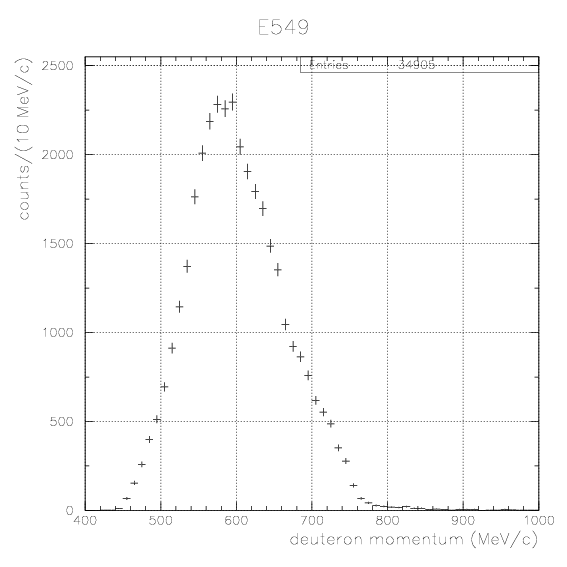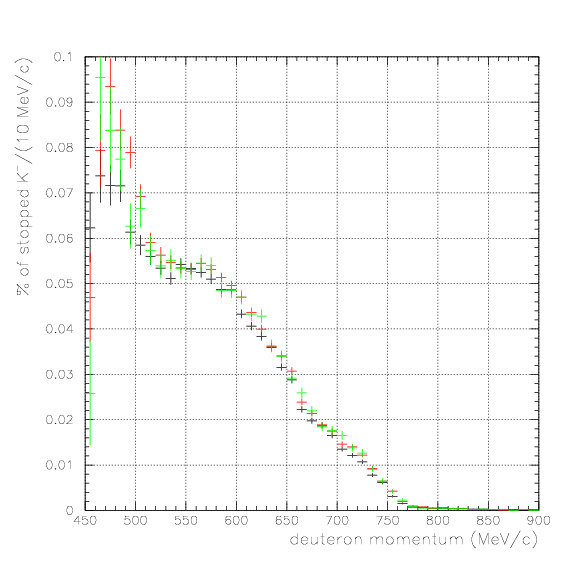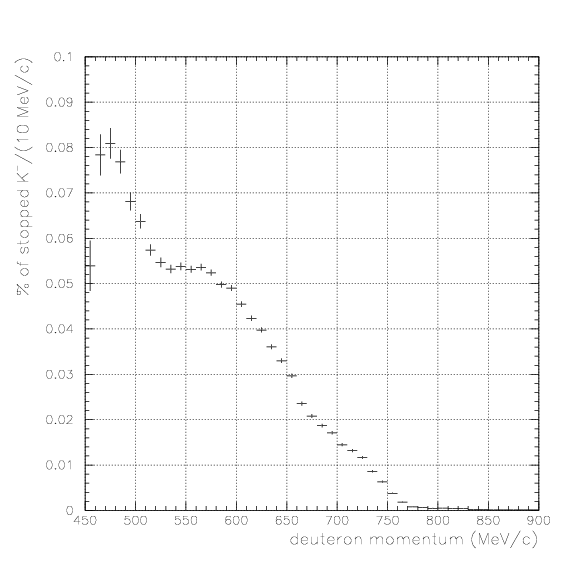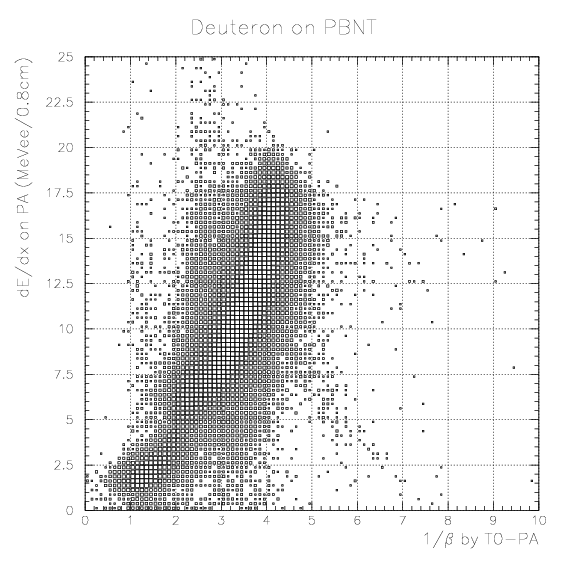
As shown, &pi component is seen. This implies the d was &pi at the entrance of PA, then converted into d by &pi 12C -> d X reaction.
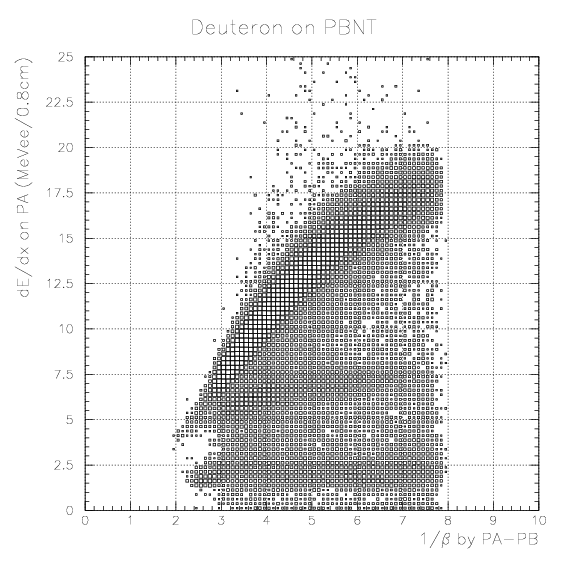
We have clearly observed 3 components on the correlation between 1/&beta by PA-PB and dE/dx on PA. To reveal the nature of the component with the second-smallest dE/dx, we compare two correlations below.
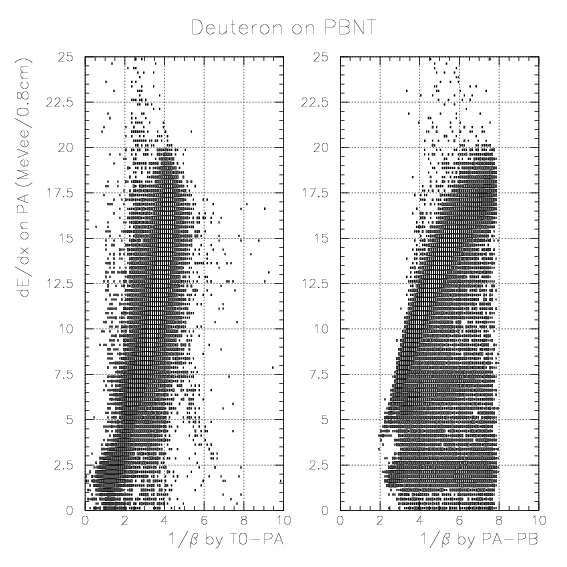
The component with the second-smallest dE/dx on PA is considered to be the proton-induced deuteron by p 12C -> d X reaction. Therefore, "deuteron" events identified by 1/&beta by PA-PB VS total energy on PB+NT are found to be contaminated by reaction product on PA, and further event selection is required by using PA-related quantities. We introduce event selection with 2D correlation between 1/&beta by PA-PB and dE/dx on PA for "deuteron" events at PB+NT as drawn nextly.
The defined event selection is shown below. We divide the 2D-region of 1/&beta by PA-PB and dE/dx on PA into four subcomponents, namely, signal, I, II, III.
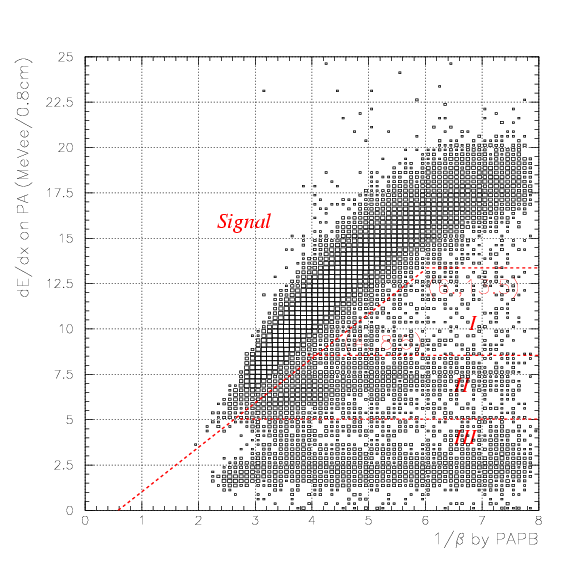
Correlations between 1/&beta by T0-PA and dE/dx on PA are shown below for the defined 2D regions.




According to them, all of I/II/III components are found to be reaction product on PA, hence they must be eliminated from inclusive 4He(stopped K-,d) spectrum and further Yd analysis. The event summary is given below.
| 2D region | identified "deuteron" number (A) | "deuteron" number after succsefull energy loss correction (B) | Survaival ratio (B/A) |
|---|---|---|---|
| "deutaron" all | 46613/65846/112459 | 41525/59612/101137 | 0.891/0.905/0.899 |
| signal (4He(stopped K-,d)X) | 37446/52108/89554 | 34905/49455/84360 | 0.932/0.949/0.942 |
| region I(II or III at the middle of PA) | 1123/1748/2871 | 871/1411/2282 | 0.776/0.807/0.795 |
| region II(12C(in-flight p,d)X on PA) | 3664/5349/9013 | 3056/4494/7550 | 0.834/0.840/0.838 |
| region III(12C(in-flight &pi+-,d)X on PA) | 4380/6641/11021 | 2693/4252/6945 | 0.615/0.640/0.630 |

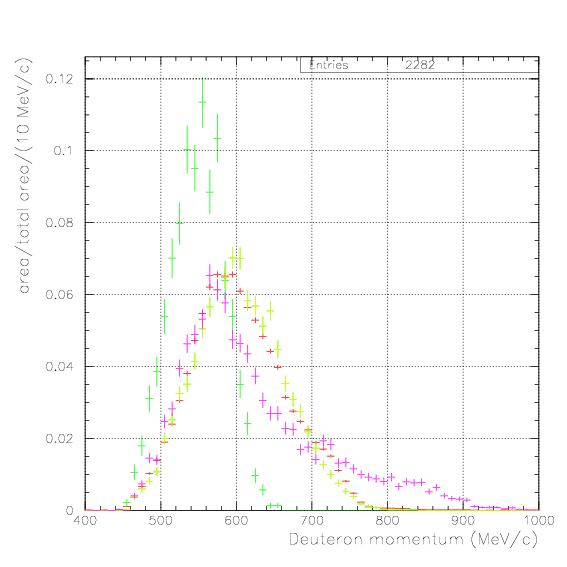
About a half of unphysical BG orginates from III component. Since dE/dx on PA is not sensitive for the in-flight reaction in front of PA, tiny unphysical high-energy BG is unavoidable, in principle.

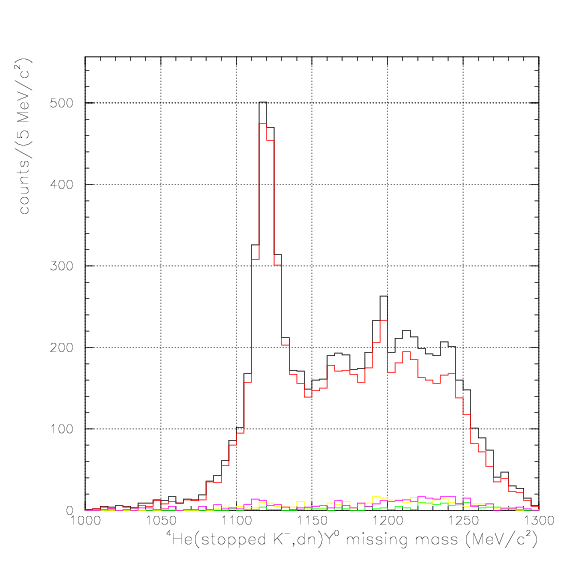
| 2D region | identified "dp" event number | identified "dn" event number | dp/inclusive dn/inclusive number ratios |
|---|---|---|---|
| "deutaron" all | 5626 | 9506 | 0.0500/0.0845 |
| signal (4He(stopped K-,d)X) | 5189 | 8186 | 0.0579/0.0914 |
| region I(II or III at the middle of PA) | 79 | 202 | 0.0275/0.0704 |
| region II(12C(in-flight p,d)X on PA) | 154 | 488 | 0.0171/0.0541 |
| region III(12C(in-flight &pi+-,d)X on PA) | 204 | 630 | 0.0185/0.0572 |
In conclusion, we could identify clear &Lambda/&Sigma- signals only in "signal" component. We consider the event selection introduced here works properly, and adopt it to define "deuteron", hereafter.
